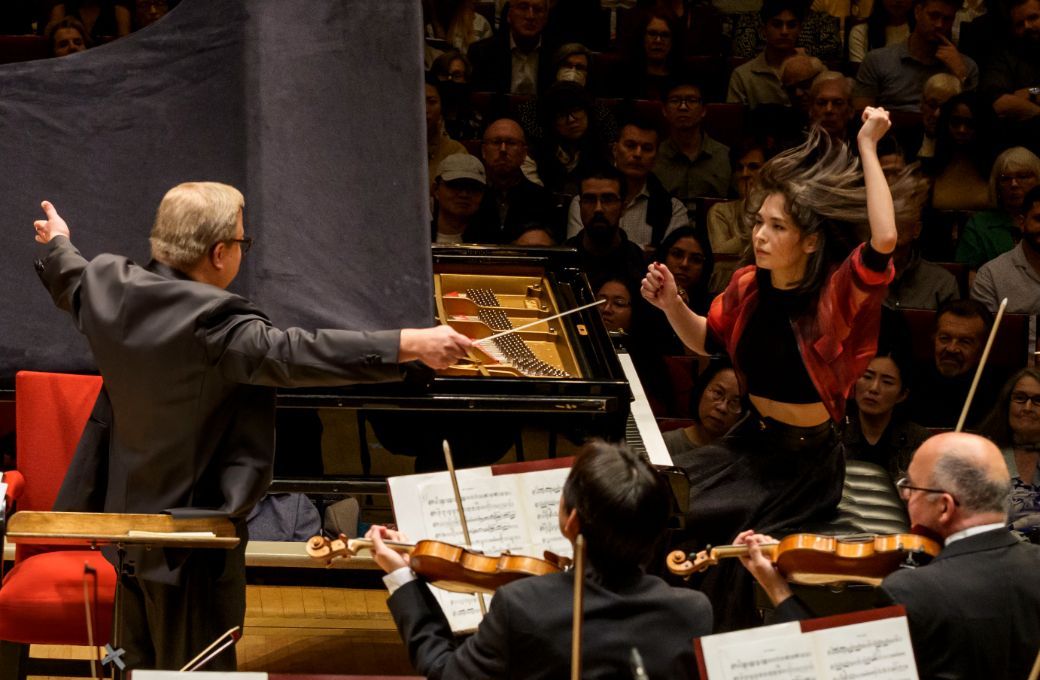Two Ravel piano concertos using an average of 1.5 hands formed the centerpiece of a Chicago Symphony Orchestra subscription concert this past weekend, both played by the purposeful pianist Alice Sara Ott. Her ability to produce a pristine tone and a wide range of expression, even when deprived of half her digits, made for an impressive one-two punch.
In the Piano Concerto in D major for the left hand, Ravel cleverly opens with remarkably low bass sounds from the orchestra alone – the bass register being the purview of a pianist’s left hand. Ott entered with persuasive force, presenting her first passage with enough power and heft to make listeners forget that she wasn’t using her right hand. Her dexterity with the left hand shone through in the melodic moments where her articulation extracted the line from a shower of notes. She maintained a sense of precision with the accompanying notes, giving each its due rather than dissolving them into the sound. This interpretive choice served, possibly unintentionally, to underscore the virtuosity of the piece. So many notes, all individually audible, for just five fingers.
The conductor, Mikko Franck, unspooled a characteristic Ravel presentation, all waves and orchestral coloration. In the biggest La Mer-like chords near the end, the orchestra drowned Ott a bit, where even two hands probably wouldn’t have been enough to maintain audibility.
After the intermission, Ott returned, having added a red shrug to her black ensemble, to play the Piano Concerto in G major. She maintained her declarative touch throughout the two-handed concerto, navigating the several stylistic shifts deftly. The audience felt moved to applaud after the exciting close to the first movement (although the left-hand concerto’s single-movement structure might have contributed).
The simplicity of the second-movement Adagio assai suited Ott’s style brilliantly. Somehow during the long solo passage Ott managed to give a sense both of whispering and singing, a covered, private tone that kept its lonely quality even in dialogue with the cor anglais. In the third movement, marked Presto, Ott’s delineating style became a motor. Franck revved up the orchestra to match her energy, and overpowered her again in the forte parts.

The program was filled out with a very likable suite titled Les Eaux célestes, by contemporary composer Camille Pépin, and Fritz Hoffman’s arrangement of material from Georges Bizet’s Carmen, which felt like filler, even in this 150th anniversary year for the opera. Both bookend pieces (9 minutes and 16, respectively, by the program’s reckoning) were shorter than both concertos (19 and 21), making for a concert a bit short on music, even if it ran basically full length with piano-lift breaks in both halves.
Programming both Ravel piano concertos in one concert was a nice idea, and Ott a well-suited soloist to undertake the twofer. There was only the slightest sense that, when the audience left, anything hadn’t been completely right.


